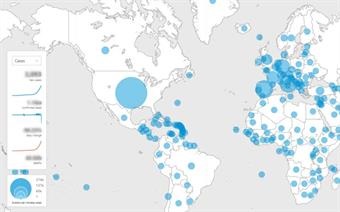Sexual and reproductive health and rights
Policy portal
Cervical cancer data
Francesco Segoni/MSF
Cervical cancer is increasing globally. Without new interventions, cases of cervical cancer are predicted to increase from 570,000 cases diagnosed in 2018 to 700,000 cases diagnosed in 2030. These increases are disproportionately impacting women living in low and middle income settings, where 85-90% of new cervical cancer cases occur. Women living with HIV are especially impacted, with a six times higher rate of developing cervical cancer.
WHO is supporting countries by updating the screening and treatment guidelines to prevent cervical cancer, developing implementation guidance and recommendations, and leading research efforts for new screening tests. This research gives us an indication on where to focus to Increase coverage, strategize and scale up guidelines efficiently.
In November 17th 2020, WHO officially launched the Global Strategy to Accelerate the Elimination of Cervical Cancer. The strong international engagement received will make it possible to reach the 2030 targets, which will save hundreds of thousands of women’s lives.
It is possible to eliminate deaths from cervical cancer. With a comprehensive approach to prevent, screen and treat, cervical cancer can be eliminated as a public health problem within a generation.
For questions or more information, please contact sis@who.int.





